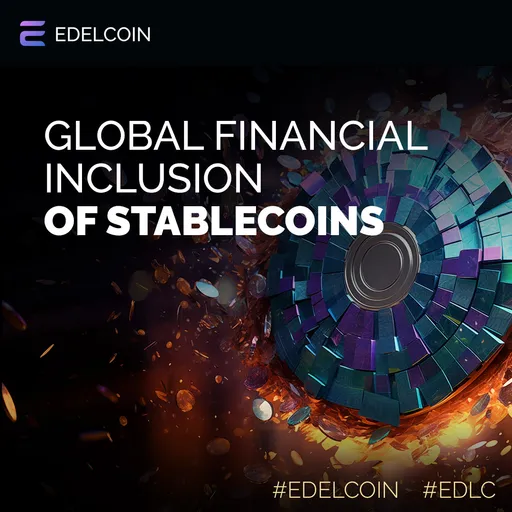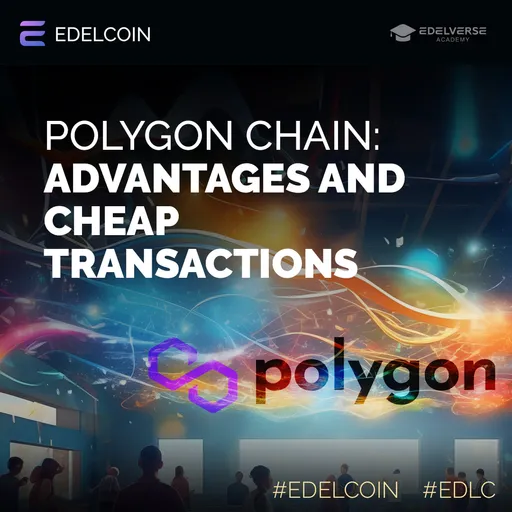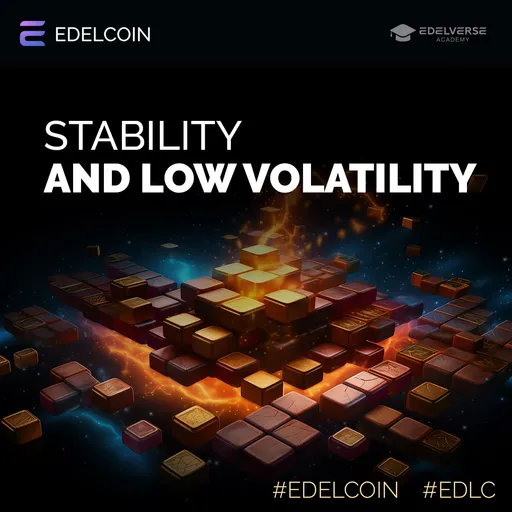
Algorithmic Stablecoins and Edelcoin as an Alternative
A Deep Dive into Decentralized Stability
In the ever-evolving world of cryptocurrency, stablecoins have carved out a niche for providing price stability amidst the market's inherent volatility. Among these, algorithmic stablecoins stand out for their innovative approach to maintaining value. Unlike traditional stablecoins, which are usually pegged to fiat currencies or physical assets, algorithmic stablecoins rely on smart contracts and algorithms to regulate their supply based on demand, aiming to stabilize their price around a peg, typically $1.
Understanding Algorithmic Stablecoins
Algorithmic stablecoins operate on the principles of monetary economics, partaking in complex mechanisms to ensure stability without the need for external collateral. They are uncollateralized, meaning their value is not backed by any physical asset. Instead, these digital currencies use a combination of mathematical algorithms and incentive mechanisms to maintain their peg to a fiat currency, such as the U.S. dollar.
The core functionality of these stablecoins is based on dynamic supply adjustments. When the price of the stablecoin exceeds its peg, the protocol automatically mints more coins to increase supply and reduce the price. Conversely, if the price drops below the peg, the protocol buys back and burns coins to reduce supply and increase the price. This method aims to provide a decentralized mechanism for price stability, akin to the way central banks manage fiat currency supply.
The Risks and Rewards
Algorithmic stablecoins, while innovative, are not without their challenges. The dramatic fall of TerraUSD (UST) in May 2022 serves as a stark reminder of the potential risks. When these stablecoins fail to maintain their peg, it can lead to a loss of confidence and a "death spiral," where the value of the stablecoin and its associated tokens plummet dramatically.
Despite these risks, algorithmic stablecoins offer several advantages. They promote decentralization, reduce reliance on centralized authorities, and provide global accessibility. They represent a frontier of innovation in achieving price stability in the crypto space without traditional collateral. Their success, however, hinges on widespread adoption, regulatory acceptance, and the resilience of their underlying algorithms.
Edelcoin: An Alternative Proposition
In contrast to the complexity and inherent risks of algorithmic stablecoins, platforms like Edelcoin.com aim to offer more straightforward and possibly safer alternatives. Edelcoin represents a novel approach in the realm of digital currencies, distinguishing itself as a stable payment token underpinned by a diverse array of precious and base metals. It's designed as a Swiss-compliant digital means for transactions and services, positioned uniquely in the cryptocurrency landscape due to its backing by tangible assets. it's essential to understand the broader context in which alternatives to algorithmic stablecoins are evaluated.
Generally, Edelcoin addresses the volatility and complexity issues by providing more transparent and asset-backed payment token. The advantages of such alternatives include improved regulatory compliance, user-friendly mechanisms for maintaining peg stability, and enhanced security features to protect against the vulnerabilities seen in some algorithmic stablecoins.
The live Edelcoin (EDLC) price today is $1.06 USD, with a 24-hour trading volume of $2,161,465 USD. The current CoinMarketCap ranking is #2465. Edelcoin is a payment/asset token designed as a Swiss compliant digital means of payment for goods and services, backed by a diversified basket of metals. Each Edelcoin is over-collateralized, ensuring reduced volatility and a stable store of wealth. It operates independently from inflationary fiat currencies and monetary policies. The token is issued as an ERC-20 on the Ethereum blockchain, with plans for expansion to additional EVM-compatible chains.
Conclusion
Algorithmic stablecoins represent a bold experiment in the domain of digital currencies, embodying the innovative spirit of decentralized finance (DeFi). They offer a vision of a future where digital currencies can maintain stable value without centralized control. However, the challenges and risks they face underscore the importance of continued innovation, regulatory clarity, and robust security measures.
As the cryptocurrency landscape evolves, it's crucial for users, developers, and regulators to engage with these innovations thoughtfully, balancing the potential for groundbreaking advancements with the need to protect investors and maintain financial stability. In this context, platforms like Edelcoin.com and others may play a crucial role in shaping the future of stablecoins, offering alternatives that address some of the limitations and risks associated with algorithmic models.

- What is the primary mechanism by which algorithmic stablecoins maintain their peg to a fiat currency?
a. By holding reserves in fiat currency or physical assets.
b. Through smart contracts and algorithms to regulate supply based on demand.
c. By fixing their value to the performance of a stock index. - What was the major risk about using TerraUSD (UST)?
a. They are susceptible to hacking and security breaches.
b. They can fail to maintain their peg, leading to a loss of confidence and a potential "death spiral."
c. They are heavily regulated, limiting their global accessibility. - How does Edelcoin propose to address the volatility and complexity seen in algorithmic stablecoins?
a. By using an advanced algorithmic model that is self-correcting.
b. By being backed by a diversified basket of metals and offering a Swiss-compliant digital means for transactions.
c. By pegging its value directly to the performance of global stock markets.
Correct answers: 1b, 2b, 3b.
Contents

 4 min
4 min






